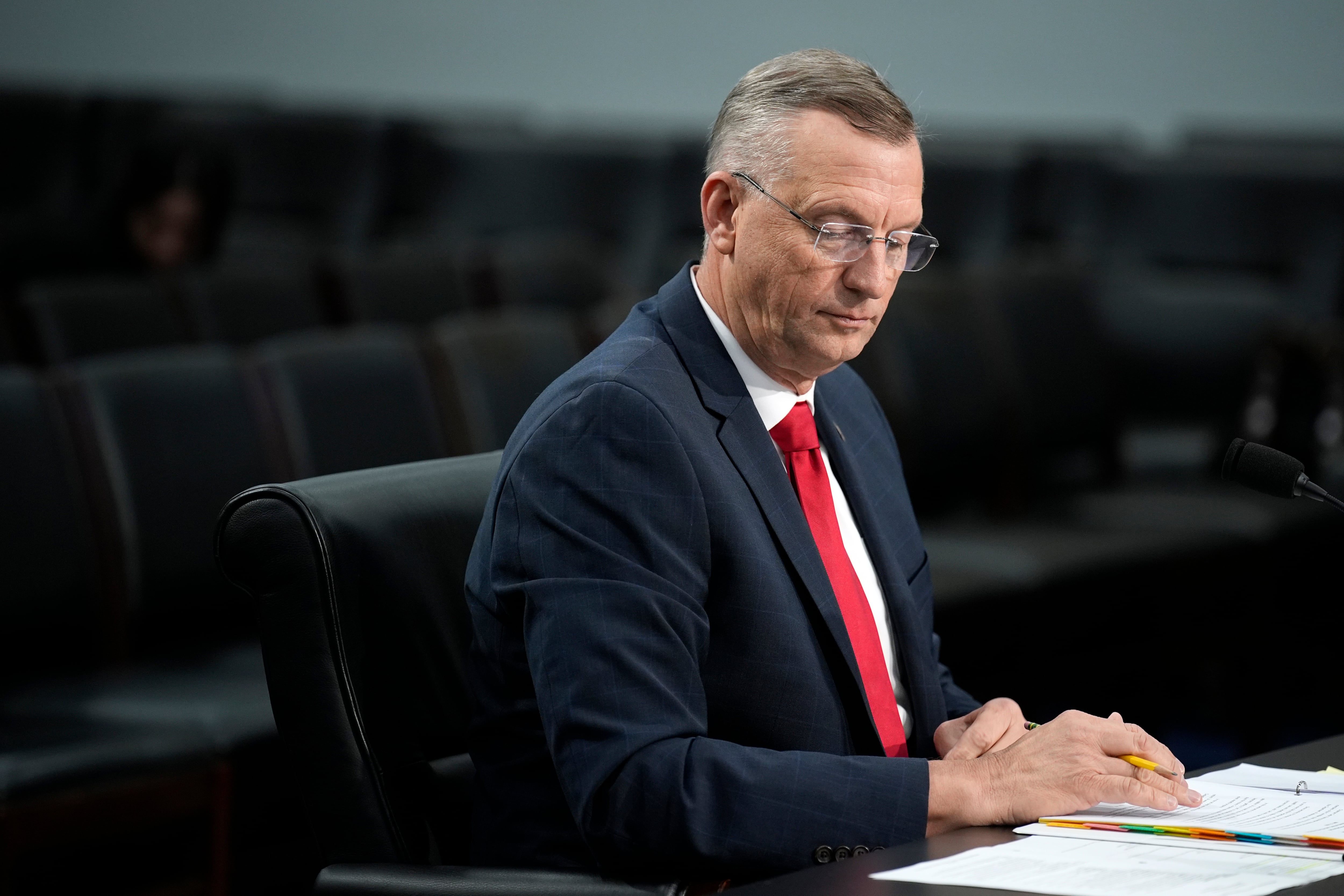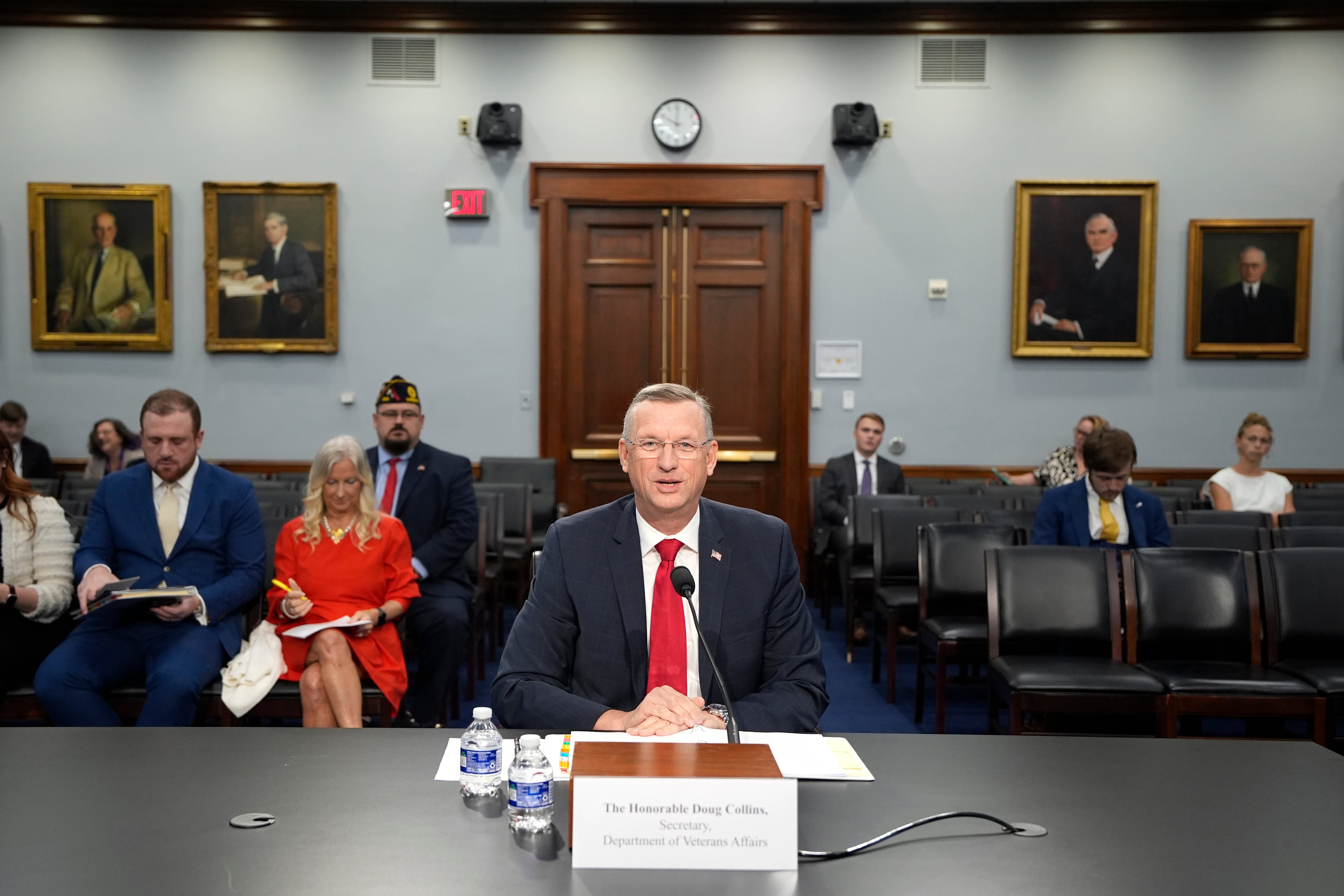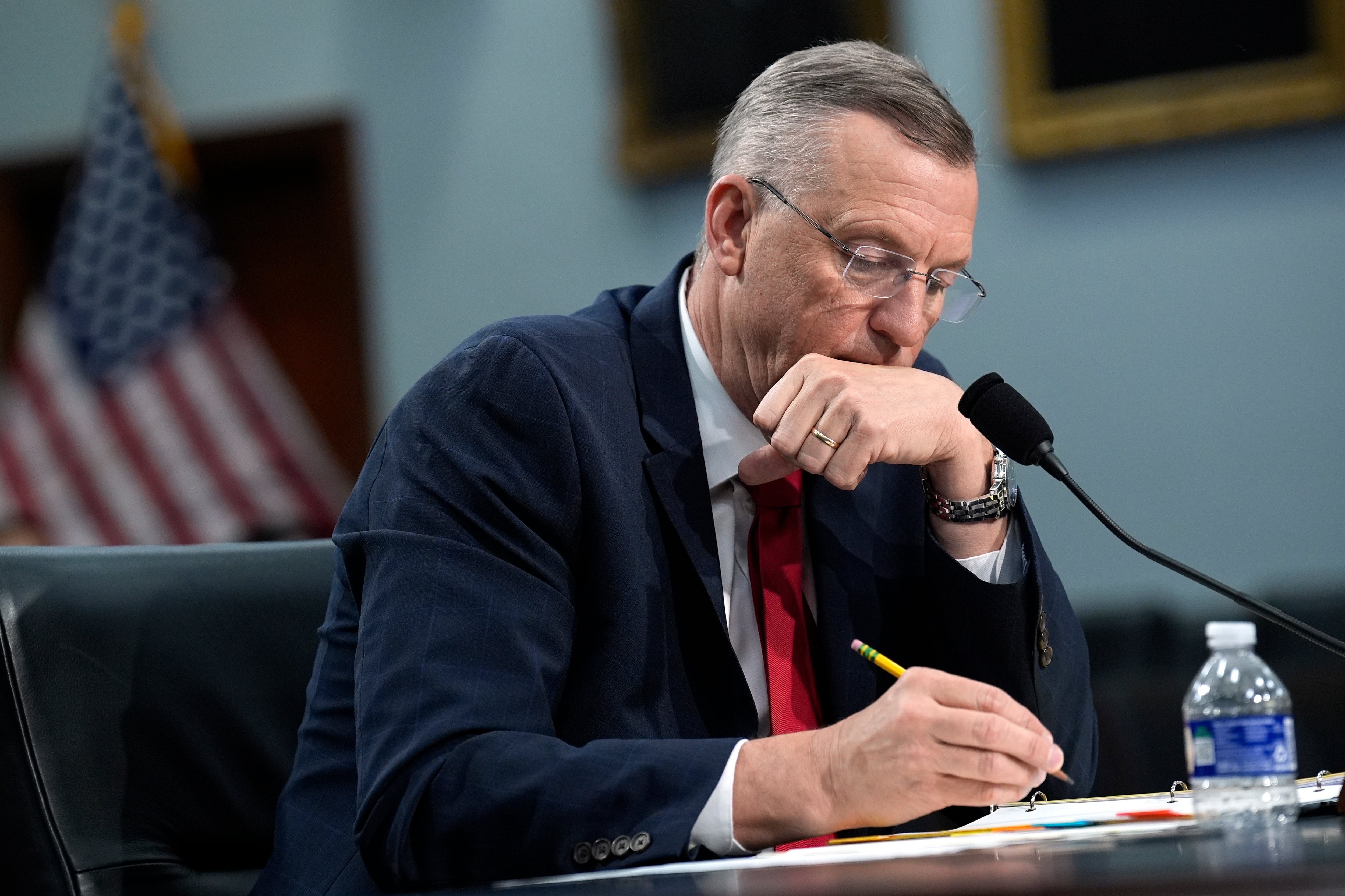source GAIA package: Sx_MilitaryTimes_M6201010007130316_5675.zip Origin key: Sx_MilitaryTimes_M6201010007130316 imported at Fri Jan 8 18:18:03 2016
Under Vice Adm. Jeffrey Fowler, the living was good at the Naval Academy — for a select few.
For the guests at a VIP party: $200 bottles of French wine and Dom Perignon champagne.
For the academy's golf association: $10,000 in food, booze and gifts at the annual Christmas party.
And for the football coaches, a steady stream of swanky perks — such as an $18,000 private party, buffet dinner and open bar under a big tent by the sea wall, to kick off the season in 2008.
Who paid for it all? That's what the Navy's inspector general spent a year investigating.
The IG found that the money to pay for these plush parties was often pulled from shadowy corners of the academy's accounting system. A "slush fund" fueled by corporate football sponsorship dollars, cash from rich benefactors and sometimes plain government money, was frequently spent in ways that were "wasteful and extravagant" or even outright illegal, according to the IG.
The IG said Fowler was not directly involved in the financial misconduct. Yet the admiral's superiors were not happy with the fast-and-loose accounting that occurred on his watch, and Fowler faced "administrative action" in April. Although Fowler served three years as required, the scandal "was a factor in him not serving any longer," top Navy spokesman Rear Adm. Denny Moynihan told Navy Times.
Fowler's retirement papers are pending before Navy Secretary Ray Mabus, who will make a determination of the rank at which Fowler will retire, Moynihan said. Fowler told the academy's Board of Visitors on June 28 that his change-of-command ceremony is slated for September.
The inspector general's 110-page report offers a rare look inside the freewheeling culture among the leadership of the academy, where football coaches and Washington-area power brokers are treated to luxuries almost unheard of in a government-run institution.
The report also reveals the money and sense of urgency dedicated to another key pillar of life on the Yard: Diversity and minority recruitment. Millions were spent, and the normal rules bent, for parties and programs that Fowler and others felt would help the academy's mission to diversify the Brigade of Midshipmen.
Navy Times obtained the IG report June 28 after a long-standing request under the Freedom of Information Act.
Fowler issued a written statement after the report became public.
"As superintendent of the Naval Academy I am responsible and accountable. I and the academy's leadership take this report seriously," he said. "It has [been] and remains the Naval Academy's goal to remain responsible stewards of private and public funding. We will continue to work with alumni and Naval Academy Foundation donors in exercising due diligence with the resources they generously contribute."
Many of the extravagant expenses were paid from "an unauthorized, off-the-books account that is improper on its face," the report said. "Its existence is a sham and it was used much as in the business definition of a 'slush fund,' i.e. to pay for things from a pool of money with little accountability required."
While the inspector general concluded that some expenditures were "within the discretionary authority" of the Naval Academy, the IG criticized the accounting and oversight of the money used.
In other instances, such as the catered parties for football coaches and their families, the IG found that the allegations of wrongful spending were "substantiated; however, the violations were unintentional."
Three officials were disciplined. In addition to Fowler's reprimand, the academy's chief financial officer, Robert Parsons, a retired Navy captain, was suspended without pay for five days, Moynihan said. The Navy did not release the name of the third official who was disciplined.
Football above all else
Much of the dubious spending was intended to keep the Annapolis football machine running smoothly. That included frequent private parties for the coaches, their families and friends. Coaches often received "gifts" that included clothing, ties and watches for the men; toys for their children; and for their wives — jewelry, designer sunglasses, handbags and coats, according to the report.
As academy officials tried to justify the regal treatment of the coaches, they explained how the Midshipmen's performance on the gridiron towered over virtually every other priority at the school.
"People don't come to the academy … because of the 'world-class faculty,' they come 'because we win football games,' " one official, whose name was redacted because of privacy restrictions, told IG investigators.
Parsons, the chief financial officer, felt that the football team's success during the past six years has spread across the entire institution.
"During that time, retention at the Naval Academy has increased significantly. During that time, the average grade-point average of all midshipmen in the brigade has increased. We haven't had a single faculty member say they've lowered their grades. The number of honor offenses has gone down. … The morale of the brigade has increased significantly. Every aspect of the Naval Academy has improved as a result of a winning football program," Parsons said.
At times, Fowler tried to distance himself from the extravagant spending on the football coaches' annual parties, telling the IG that was something he "inherited" and "continue[s] to do."
Fowler said he was unaware of the accounting details regarding where the money came from.
But when the IG investigators explained what they began calling a "slush fund" — created in April 2007 and filled with about $300,000 of corporate sponsorship money that the academy received for participation in bowl games — the admiral saw no fundamental problem.
"It is not surprising to me that we take profits from the good times of sports, which we are in that era, to help the morale of various people here working at the Naval Academy. Now, is this sort of fund the way to do it or not? I don't know the technicalities, but the concept of us doing special things for the people who work here in my mind is not a bad thing, especially when you are using profits from the good things that are happening if it is helping the whole morale. And football is a big part of that," Fowler told the IG.
Minority recruitment
In 2008, Fowler signaled to his staff that diversity and minority recruitment were "the number one priority at the Naval Academy" one official told the IG.
As such, Fowler made his top enlisted leader, Command Master Chief (AW/SW) Evelyn Banks — Annapolis' first black female command master chief — a member of his executive team and charged her with becoming an ambassador for the academy. In so doing, she spent hundreds of thousands of dollars on travel, entertainment and keepsakes, although investigators found nothing illegal.
The academy also hurriedly spent $3.6 million on a minority recruitment media effort that violated many of the most basic Navy rules for contract oversight and accounting, according to the IG.
The academy hired a woman based in part on the recommendation of an admiral who met her at a Hispanic awards dinner. She claimed responsibility for a successful minority recruitment campaign for the Los Angeles Police Department, the IG said.
Later on, Navy officials learned there was no evidence she was involved in that police department project. But that was after the academy hired her to produce some commercials and a short film to feature in the school's visitors' center, the IG report said.
Fowler urgently wanted to get the commercials to television networks as soon as possible, prompting Parsons to pay the woman's production company more than $1 million before the $2.5 million contract was signed.
The academy officials who signed the deal lacked authority to issue a contract of that size. The contract did not include the most basic clauses that protect the government from lawsuits, and it's unclear whether any attorney ever reviewed the contract, according to the IG.
An additional $980,000 was given to the production company, although the contract was never modified to explain the purpose of that additional money.
The IG suggested that Navy Recruiting Command should have paid for the project, not the academy. Nevertheless, Fowler was pleased with the final production despite the "technical issues" in the contracting process.
"We showed the 60-second spot to all the flag officers. They thought it was wonderful," the admiral told the IG.
The money holder
At the center of the shady financial machinations was Parsons, the academy's CFO. He authorized the creation of the "slush fund," served as "project manager" for the minority recruitment video and made many of the questionable financial decisions in which Fowler denied involvement, the IG said.
Beyond that, Parsons maintained a close friendship with an "anonymous donor" who gave the academy hundreds of thousands of dollars — sometimes officially, sometimes not — as part of a quasi-official relationship.
The donor's name in the report is redacted, but it does identify him as the president of Richardson Trident Co., a suburban Dallas metal wholesaler with branches across the country. Texas business records show the firm's president is Thomas Bentley, a 1954 Naval Academy alumnus.
Bentley could not be reached for comment. An assistant at his office agreed to take a message for him. No one answered at the phone number listed for his home.
Parsons assured the IG that Richardson Trident had no military contracts. But the firm did receive several Defense Department contracts during the 2000s, meaning that some of the president's contributions violated the Pentagon's conflict-of-interest regulations, according to the IG.
The report details the eccentric ways in which the donor supported the academy, and showed how the donor's and Parsons' friendship blurred the lines between official and nonofficial giving. Sometimes the donor wrote checks to Annapolis like a traditional contributor, designating they be credited "anonymous" and used any way officials decided would help the brigade.
But he also maintained a $100,000 credit line at a local Annapolis wine store and encouraged Parsons to make sure that fine wines were served at all events held at Fowler's formal residence, known as Buchanan House, according to the IG report. Sometimes, when there was wine left over, Parsons brought it back to his office — at the time the IG interviewed him, Parsons had 27 unopened bottles, worth about $3,400.
The donor visited Annapolis several times a year and often went on lavish shopping sprees at the Midshipman Store, to the tune of $100,000 or more in one visit, buying Navy logo jackets and big-ticket gifts to give away, or handing them off to Parsons for him to give away, according to the IG.
The donor sent the Naval Academy expensive crystal bowls, stemware and two chandeliers worth as much as $30,000 apiece, which are now hanging in the first floor of the Naval Academy Club, the IG said.
The millionaire — whom Parsons conceded to investigators was "eccentric" — provided special perks for Parsons, which the academy's CFO failed to include on the conflict-of-interest forms required of all top government officials, the IG said.
Parsons vacationed with the donor at the donor's expense on several occasions, the report said.
Another embarrassment
The IG findings were yet another embarrassment for the academy, which has endured several controversies during Fowler's tenure at Annapolis.
Last year, the academy allowed a pregnant midshipman to graduate, despite the school's prohibitions against marriage and pregnancy. Later, the academy leadership struggled to explain why it had tried to replace white male members of a color guard sent to march at the World Series with a woman and a nonwhite midshipman. Earlier this year, Fowler reportedly intervened to keep a star football player on the Yard after he had tested positive for marijuana, a decision that sent the Brigade of Midshipmen into "an uproar," one source told Navy Times.
Fowler also drew attention for his opposition to the traditional Herndon Monument climb, in which plebes scale a monument on the Yard to mark the end of their first year. After musing for reporters that he thought mids should cancel the event, Fowler ordered the plebes to ascend the monument without its traditional coating of lard, meaning they got one of the fastest times in history.
Under Fowler and his predecessor, Vice Adm. Rodney Rempt, the Naval Academy has enjoyed unparalleled success in the two key areas of football and diversity. The Midshipmen have beaten their arch-rival Army for an unprecedented eight consecutive years, and each new class of plebes includes more nonwhite and female mids than any before.
But observers have said these twin objectives took leadership's eye off the goal of producing the best officers for the Navy and Marine Corps. One outspoken critic, English professor Bruce Fleming, went so far as to pen an opinion piece for The New York Times in May declaring that "mediocrity is the norm" at the Naval Academy, in order to please alumni with sports victories and serve the Navy's politically correct goals of more nonwhite officers.
Fowler wrote a response, which also appeared in The New York Times, that said the academy's "standards remain high, and our graduates exemplify excellence."
Fowler will be replaced by Rear Adm. Michael Miller.





